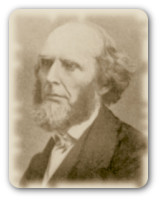A God-Sized Vision: Revival Stories that Stretch and Stir
[amazon 0310327032 thumbnail]
Even before its October 2010 release, A God-Sized Vision: Revival Stories that Stretch and Stir was creating buzz. It had already garnered praise from the likes of Tim Keller, D.A. Carson, George Marsden, Nancy Leigh DeMoss, and Al Mohler. The endorsements alone sound like a Who’s Who of conservative evangelicalism. It is not hard to see why.
The book was written by seasoned author John Woodbridge and young journalist Collin Hansen. Woodbridge is research professor of Church History and History of Christian Thought at Trinity Evangelical Divinity School. His biography reads like catalogue from a Greek drama, only instead of ships, it lists degree upon degree and award upon award. Hansen (who also has ties to Trinity having received his MDiv there) currently serves as the editorial director for The Gospel Coalition. He had already made his mark with his 2008 book, Young, Restless, Reformed: A Journalist’s Journey with the New Calvinists. In A God-Sized Vision, Woodbridge and Hansen tackle the inspiring, though often sticky, topic of spiritual revival.
Terms and definitions
Perhaps the greatest challenge to writing a book on revival is that there are so many different understandings of what revival is and how it comes about. Hansen and Woodbridge engage this problem head on in Chapter 1 by offering a biblical theology of revival and commentary from noted figures from Christian history. Taking cues from Jonathan Edwards and Martin Lloyd-Jones, the authors present a comparatively reformed understanding of spiritual renewal. They note that “only God himself could bestow such a blessing on his people in his own sovereign time” (p. 31).
Nonetheless, they do not underestimate the complexity of God’s work and are quick to recognize that throughout history, many different “theological streams” have often united in revivals. During the First Great Awakening, “America in particular became a remarkable laboratory where several different revival traditions merged to bolster the burgeoning evangelical movement” (p. 31). That tradition grew even more complex during the Second Great Awakening with the contribution of Finney’s emphasis on human responsibility. Woodbridge and Hansen handle these seemingly disparate positions well and conclude that “though God alone can instigate revival, the church need not wait idly…. We can confess our sins…and forsake them. Above all else, we can pray” (p. 35).
Discussion
Charles Grandison Finney, Part 1: Finney's System
 First appeared at SharperIron on June 3, 2005. Original post and discussion are available here
First appeared at SharperIron on June 3, 2005. Original post and discussion are available here
 First appeared at SharperIron on June 11, 2005. Original post and discussion are available
First appeared at SharperIron on June 11, 2005. Original post and discussion are available 
Discussion